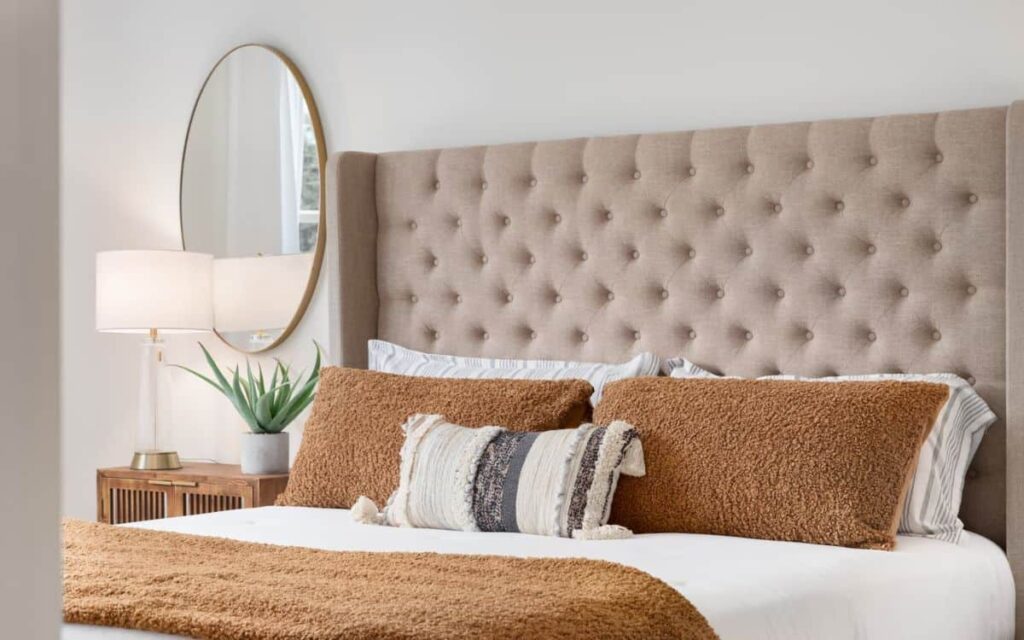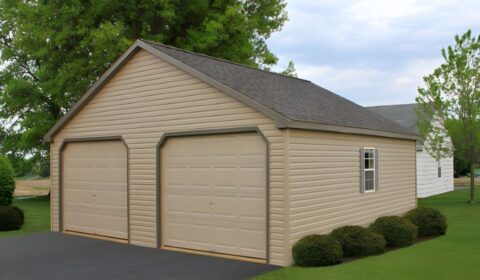Maintaining a clean and fresh fabric headboard is essential for a healthy and inviting bedroom environment. Over time, fabric headboards can accumulate dust, allergens, and natural oils from hair and skin, leading to stains and unpleasant odours. Regular cleaning not only preserves the appearance of your headboard but also extends its lifespan. This comprehensive guide will explore effective methods to clean a fabric headboard, including baking soda, and provide tips for UK residents.
Understanding Your Fabric Headboard
Before embarking on the cleaning process, it’s crucial to identify the type of fabric your headboard is made from. Common materials include linen, velvet, cotton, and synthetic blends. Each fabric type may require specific cleaning methods:
- Linen and Cotton: Generally durable and can withstand gentle cleaning solutions.
- Velvet: Requires delicate handling to maintain its texture and appearance.
- Synthetic Blends: Often more resistant to stains but can be sensitive to certain cleaning agents.
Always refer to the manufacturer’s care label for specific cleaning instructions.
Essential Cleaning Supplies
To effectively clean your fabric headboard, gather the following supplies:
- Vacuum Cleaner with Upholstery Attachment: This removes dust and debris.
- Baking Soda: A natural deodoriser and mild abrasive.
- Mild Detergent or Fabric Cleaner: Ensure it suits your headboard’s fabric type.
- White Cloths or Sponges: To prevent colour transfer during cleaning.
- Soft Brush: For gentle scrubbing.
- Spray Bottle: To apply cleaning solutions evenly.
- Cold Water: Hot water can set stains, so freezing is preferable.
Step-by-Step Cleaning Process
Regular Dusting and Vacuuming
Dust and allergens can settle on your headboard, affecting air quality and appearance.
- Frequency: Vacuum your headboard weekly using the upholstery attachment to remove surface dust and prevent buildup.
Spot Cleaning Stains
Address spills and stains promptly to prevent them from setting.
- Blot the Stain: Use a white cloth to gently blot (not rub) the stain, absorbing as much of the spill as possible.
- Prepare Cleaning Solution: Mix a small amount of mild detergent with cold water.
- Test on a Hidden Area: Before applying, test the solution on an inconspicuous part of the headboard to ensure it doesn’t cause discolouration.
- Clean the Stain: Dampen a cloth with the solution and gently blot the stain, working from the outside to prevent spreading.
- Rinse and Dry: Use a separate cloth dampened with clean water to remove any soap residue, then blot dry with a dry cloth.
Deep Cleaning with Baking Soda
Baking soda is renowned for its cleaning and deodorising properties.
- Apply Baking Soda: Lightly sprinkle baking soda over the entire headboard surface.
- Let It Sit: Allow the baking soda to sit for several hours, preferably overnight, to absorb odours and oils.
- Vacuum Residue: Thoroughly vacuum the headboard to remove all traces of baking soda.
Baking soda can be particularly effective for grease-based stains, such as those from scalp oils. Apply it to the affected area, let it sit for a few hours to absorb the oils, and then vacuum it off.
Addressing Odours
Persistent odours can be tackled with a vinegar solution.
- Prepare Solution: Mix equal parts white vinegar and cold water in a spray bottle.
- Light Application: Lightly mist the headboard, ensuring it doesn’t become overly saturated.
- Air Dry: Open windows or use fans to facilitate quick drying.
Note: Always test the vinegar solution on a small, hidden area first to ensure it doesn’t affect the fabric’s colour.
Professional Cleaning
Professional cleaning may be the best option for delicate fabrics like velvet or heavily soiled headboards.
- Frequency: Consider professional cleaning annually or as needed based on usage and visible dirt.
Preventative Measures
Maintaining your fabric headboard’s cleanliness is easier with regular care.
- Regular Vacuuming: Incorporate headboard vacuuming into your weekly cleaning routine to prevent dust accumulation.
- Immediate Spill Response: Address spills and stains as soon as they occur to prevent them from setting.
- Protective Covers: Removable, washable covers or pillowcases shield the headboard from direct contact with hair and skin oils.
- Room Ventilation: Ensure proper air circulation to prevent moisture buildup, which can lead to mould or mildew.
Cleaning Tips Specific to the UK
Residents in the UK can benefit from the following region-specific advice:
- Humidity Considerations: The UK’s damp climate can contribute to mould growth. Regularly check your headboard for signs of mould and address promptly with appropriate cleaning solutions.
- Product Availability: Baking soda, known as bicarbonate of soda in the UK, is readily available in supermarkets and is an affordable cleaning agent.
- Seasonal Cleaning: Take advantage of drier seasons for deep cleaning to ensure quicker drying times and prevent moisture-related issues.
Final Thoughts
Keeping your fabric headboard clean enhances the aesthetics and hygiene of your bedroom. You can maintain a fresh and well-kept headboard with regular vacuuming, spot cleaning, and occasional deep cleaning using baking soda. Whether you are tackling stains, odours, or dust, following these methods will help preserve the beauty and longevity of your headboard in the UK climate. By incorporating these simple yet effective cleaning techniques, you can enjoy a clean and inviting sleeping space all year round.
Read More Cleaning Blogs At: The Home Designer
Frequently Asked Questions
Can I use baking soda to clean my fabric headboard?
Yes, baking soda is an excellent natural cleaner. Sprinkle it over the headboard and let it sit for a few hours to absorb odours and dirt before vacuuming it off. Mix baking soda with a little water to form a paste for tougher stains if needed. This method is particularly useful in the UK, where humidity can cause fabric to retain odours.
How do I remove stubborn stains from my headboard?
For stubborn stains, mix mild detergent and water or use a fabric upholstery cleaner. Apply gently with a clean cloth, blotting rather than rubbing. Test any cleaning solution on an inconspicuous area first to avoid damage.
Is it safe to use vinegar on my fabric headboard?
White vinegar diluted with water can deodorise and disinfect a fabric headboard. However, always test it first to ensure it doesn't discolour the fabric. Allow proper ventilation to help the smell dissipate quickly.
Should I hire a professional to clean my headboard?
Professional cleaning might be the best option if your headboard is heavily soiled or made from delicate fabrics like velvet. It ensures deep cleaning without damage and is especially useful for expensive or antique headboards.





